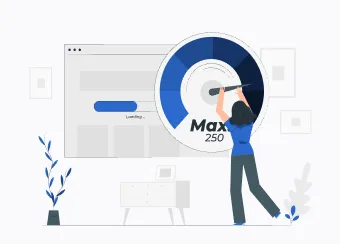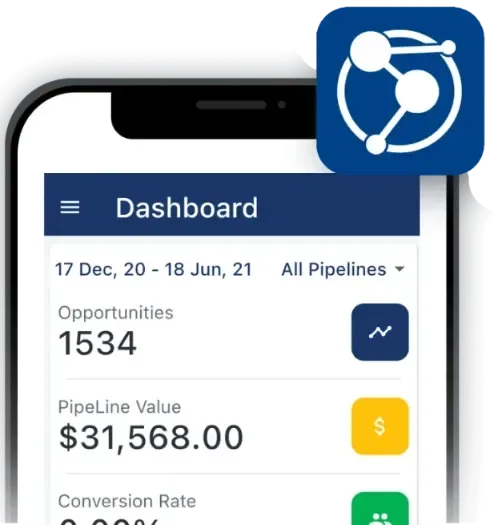Blog
Blog

Optimize Website Health & Speed for a Better User Experience
Optimized Website for a Better User Experience
Learn how to optimize your website health and load speed so you can provide an excellent
experience for your visitors. Follow the essential steps provided in this blog.
Simply put, a website health check verifies that your site satisfies all essential performance and security criteria. Plus, you can look for weak spots where you may increase site performance and enhance visibility while improving conversion rates. With new updates from Google, such as the Page Insights update (handily explained in our article), it’s more important than ever to check how well your website performs.
We recommend you do a website health check once a month, but also keep an eye on things like traffic and performance indicators to see if there are any possibilities for improvement. We also encourage you to perform an annual comprehensive website audit to get a deeper insight into each area to see where you can improve your site to serve your users better.
There are several critical components to a website health check.
You must address five essential factors when carrying out your website health check. These are security, performance, search exposure, user experience, monitoring, and alerts.

1. Security
Not only do you want to protect customer data from meeting ICO and GDPR compliance, but also because it’s simply good business practice. Furthermore, having a secure website protects your investment and online reputation.
2. Performance
Your website’s speed and reliability have always been important factors in providing the best possible user experience and maximizing your chances of conversion. With the addition of Google’s Core Web Vitals benchmarks (starting May 2021), your website’s performance is even more critical to ensuring successful organic search results.
3. Search Visibility
Many areas fall under search visibility, more commonly known as search engine optimization (SEO). SEO is crucial to ensuring your target users can see your website. There are a handful of technical SEO elements that we recommend checking regularly using Google Search Console, and we have included some alternative tools below to check these specific points:
Search Visibility Checks & Tools
– Broken or empty links
On the other hand, broken links are highly undesirable from a user standpoint. However, broken links limit your site’s flow of link equity, negatively impacting search rankings.
– XML sitemap & Robots.txt
This will allows you to double-check that your sitemap is up to date and submit it through Google Search Console if necessary.
XML Sitemaps – XML sitemap validator
This practical tool lets you see if any of your websites have been blocked or are currently being examined by search engines.
4. User Experience (UX)
A high priority may be given to multivariate testing, as it is the most complex and time-consuming type. Since this chapter covered a wide range of areas, you should remember that WIX can sometimes be seen as less important than other topics previously discussed. However, monitoring and optimizing your user experience is just as crucial as it helps you get the most out of people visiting your website. This is critical for increasing conversion rates and assisting company development.
5. Monitoring & Alerts
Tools that provide real-time alerts about potential issues on your website are essential for any website owner. While setting up email alerts may seem like another way to clutter your whole inbox, choosing the right tools and determining critical alerts can help keep your website running smoothly.
Uptime Robot: With continuously available website alerts, automatic renewals for your SSL certificate, and keyword monitoring, you will always know your website’s and network devices’ status.
Google Analytics: The excellent alert feature on Proof notifies you of any significant changes to your average time on site, page load time on a mobile device, bounce rate, goal conversion rate, organic traffic, transactions, and revenue. You can make this data as granular as you need it to be by tracking the above metrics by specific pages, geography, or device type. This acts as an initial warning system that could suggest an issue.
Google Search Console: Use this to keep track of your site’s progress, such as mobile optimization, breadcrumb placement, changes in coverage and traffic volume, etc.
What is the first contentful painting of a webpage?
The first contentful paint (FCP) measures the time it takes for the first piece of content on a webpage to appear after you’ve landed there.
Individual elements on a web page typically load one at a time instead of together. Ever clicked on where the top loaded but then had to wait for the bottom half? Or landed somewhere, and some stuff showed up right away while other things took longer? That’s because of First Contentful Paint (FCP).
What is a webpage’s DOMContent loaded (DCL)?
DOMContent Loaded (DCL) is the right time it takes for everything on a webpage to load. This includes code at the top and bottom of a webpage, measured through First Contentful Paint (FCP). Anything that comes after FCP is also included in DCL.
How is webpage speed measured?
Never think of website speed as a definite number. Why? The objective data and the natural world experience are always different. Monthly website check-ups are essential to keep your company’s digital presence strong and build brand awareness.
Don’t worry if you don’t have any coding experience. Enter your URL into the following tools to evaluate your site’s page speed, link health, mobile user-friendliness, web accessibility, keyword rankings, and UX design in one go.
Page Speed
The speed of your website’s page loading directly impacts your spot on search engine ranking lists.
Websites that load faster are usually ranked higher because they provide a better user experience. Users are impatient, especially those using mobile devices. They won’t wait more than a few seconds for a page to load before moving. A painfully slow-loading website will cause about 40% of potential customers to leave without ever exploring the rest of your site, which could have a disastrous effect on business.
Broken Links
Having broken links on your website can negatively impact your search engine ranking and user experience. These problems can have lasting effects, even if you fix them eventually. Sometimes, it may already be too late to win back lost visitors. According to a study, 88% of online shoppers say they would not return to a website after having a bad user experience.
To keep your website working smoothly and keeping visitors happy, make sure to conduct monthly link checks. This way, you can catch any broken links and fix them before they cause any significant issues. Plenty of free tools available online can help with this, such as brokenlinkcheck.com or the Chrome extension.
Begin by creating a list of keywords that are relevant to your firm.
Mobile Responsiveness
With mobile internet use only increasing, a responsive website is now non-negotiable. Last year, phones were responsible for over half of web traffic worldwide.
If you don’t have a mobile-optimized website, about half of your potential visitors will become annoyed with your site. Also, Google’s search engine algorithms now prioritize the mobile version of websites over the desktop version (as of July 1, 2019), so if your site isn’t designed to be responsive on smaller screens, it’ll rank lower in searches.
Web Accessibility
Accessibility has become an essential part of web design as it enables everyone, regardless of physical or mental abilities, to participate equally on the internet. Screen readers and other keyboard-based technologies allow users with disabilities or impairments to browse your site without difficulty.
W3C has recommended these tools for checking the accessibility of your website. Our favorite tool is WAVE’s Web Accessibility Evaluation Tool.
Keyword Rankings
Keyword ranks are a good indicator of your site’s search engine rankings for industry-specific keywords. You may not want to rank highly for ‘women’s summer dresses,’ but you do want to rank well for ‘outdoor camping equipment,’ for example.
Begin by making an intelligent list of relevant keywords for your company. Local and category-specific keywords should be included. The most popular way to create a keyword list is using Google Ads Keyword Planner.
The majority of keyword tracking tools demand a monthly fee. However, there are a few free options:
UX Design
If you’ve already completed all of the other tests on your site and they’re still failing to meet your goals, it’s time for a redesign. User experience design (UX) is the art of designing functional, simple-to-use, and pleasant products (digital or physical). Simply put, it puts user experience first in product design. While Google Analytics provides valuable information regarding website usage, such as the bounce rate, page exits, and most-visited pages, heat mapping tools like Crazy Egg or Hotjar give a more comprehensive look at how users interact with your site. By tracking user interactions and identifying areas of disuse, these tools can help you improve your website’s UX.
To Conclude:
While website health and load speed are essential, they are not the only ranking factors that Google considers. However, optimizing your website for these two factors will help improve your site’s overall performance and make it more likely to rank higher on search engine results pages.

Social Media Marketing Problems to consider
Optimize your social media, content affiliate marketing strategy with these essential insights. Explore changes in social media, increasing customer skepticism, TikTok's influence, and the rising cost...
Read More

understanding the basics of affiliate marketing Programs
Selecting the ideal affiliate program is crucial for success. Consider products, commissions, and payment structures. Benefit from increased traffic, brand trust, global reach, and multiple sales stra...
Read More

Optimize Website Health & Speed for better Experience
Boost your website's SEO with our comprehensive guide on optimizing health and load speed. Enhance user experience, improve search visibility, and monitor performance for higher rankings....
Read More

the Truth about affiliate marketing and hiring
Explore the Benefits of Affiliate Marketing: Learn how it can grow your brand, boost revenue, and reach your audience effectively. Find out how an affiliate marketing agency can help you succeed, and...
Read More

4 steps to set up your own affiliate program (Beginners)
Launch a powerful affiliate program with these 8 steps for success. Define your goals, set rules, and attract affiliates through strategic marketing. Choose partners that align with your brand and wat...
Read More

A beginners guide to attract more customers
Boost your website's SEO with our comprehensive guide on optimizing health and load speed. Enhance user experience, improve search visibility, and monitor performance for higher rankings....
Read More
Join Our Newsletter
Get awesome tips and the latest in Digital Marketing! No Spam Ever

Bring NationwideLeads on the go with our Lead Connector App
Receive all of your inbound calls with our iOS & Playstore Mobile App. Assign specific phone numbers to staff members and track calls. Text on the go to all your lead inquiries. The time-saving opportunities are endless.
Email, Video SMS, Calls, etc
Drop Ringless Voicemails
Track All Leads & Calls
Custom Business Number
2024 | All Rights Reserved
2112 Broadway St NE, Ste 225 #280, Minneapolis, MN 55413
2112 Broadway St NE, Ste 225 #280,
Minneapolis, MN 55413






